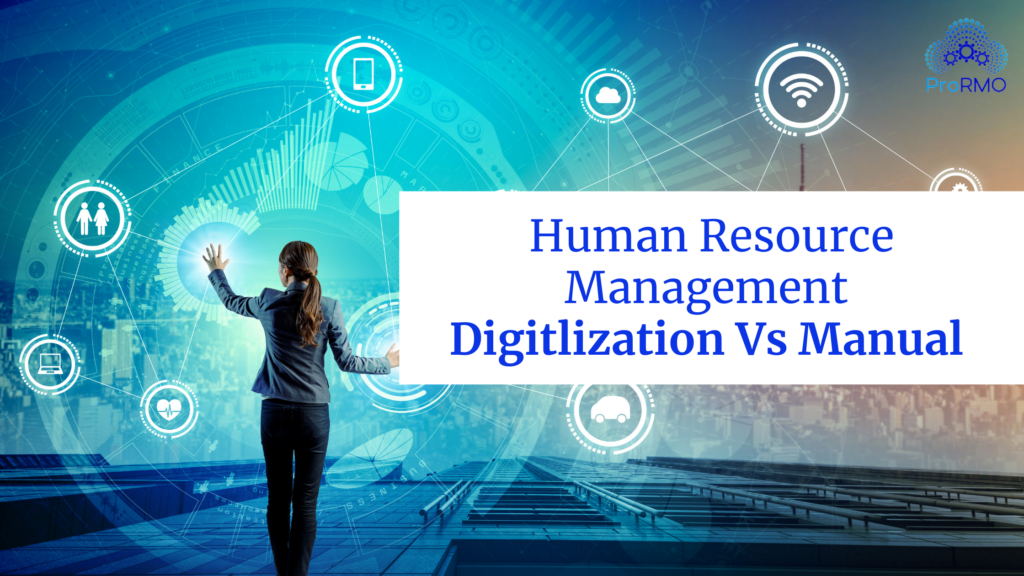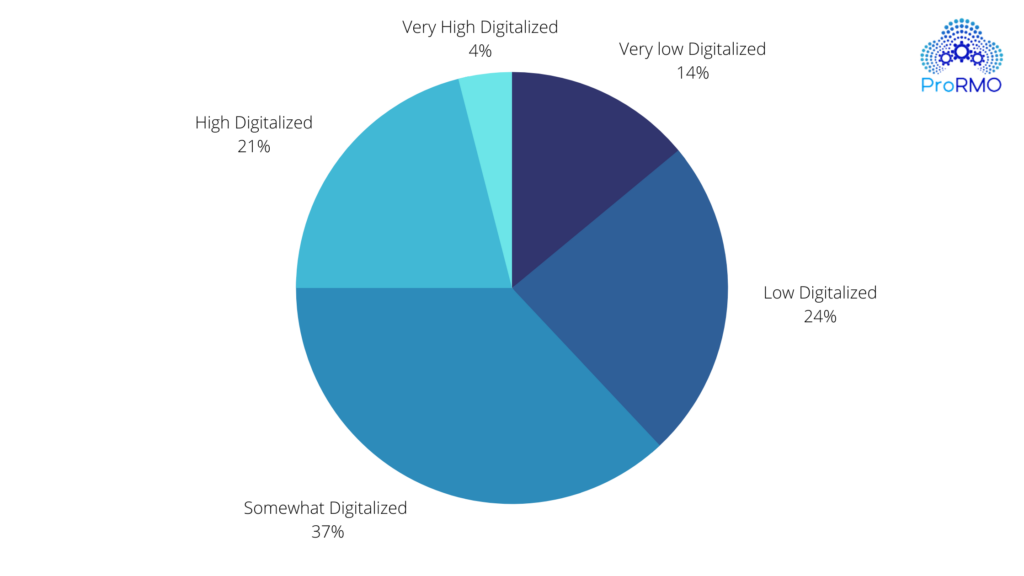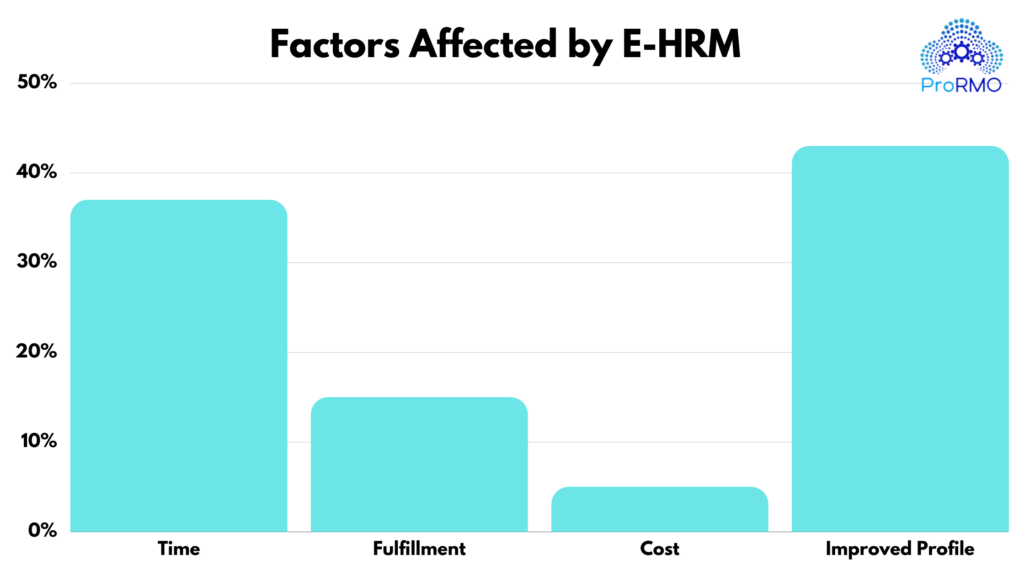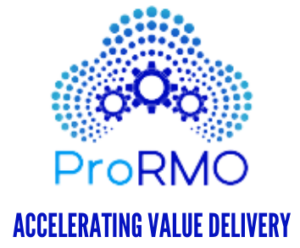
Everything takes digital form with the introduction of the internet and its services and the fast growth of technology. It’s a good thing to remove all the errors and to address all the deficiencies created by the manual process in human resources management and techniques.
Digitization is a not a very recent step in human resource management but it definitely is a very unexplored domain as the manual process seems very traditional and is passed on since generations. However, by introducing digitalization in the management of human resources, it is evident that positive changes have been caused in organizations in several respects – both monetary and non-monetary. Human resources management, called Electronic Human Resources Management, has been transformed into E-HRM, which consists of HR integrated systems that can be managed from all over the world.
A source survey revealed how much and in what measure the percentage of existing companies is digitized.
As you can see, only 25% of the organizations are digitalizing, it is certainly not widely discussed and there is no awareness of it.

People or organizations may wonder why they should invest their time and effort to digitize HRM. Let us visually show you the response,
The following diagram made by us would show after the research and collection of information from different websites what aspects are affected and what effect they can have on everyone.

As it shows, that the time saved right from the beginning of the recruitment process is over 35 percent and the entry profiling is authentic and fits around 45 percent better than the original one. The time saved is more than 35 percent.
If the figures aren’t sufficient to stress the benefits of digitization of HRMs, let’s look at the disadvantages of the complete manual HRM procedure.
Manual HR administration leads to:
- Decrease of productivity – Many human resources domain tasks like leaves, exercises are extremely long and time-consuming when performed manually. This means that employees spend more time on less profitable and fundamental tasks than on actual work and therefore reduce productivity.
- Work Quality – It is a cumbersome process when manual data entries are recorded. As the workforce grows, the number of records is increased, which results in many human mistakes, time loss and very bad effects on the reputation of the organization as well. It causes high HR turnover to increase and significant actions to be lost.
- Impact on employees – Management, particularly manual work, causes employee disinterest because it distracts them from their actual work and frustrates employees. Some employees tend to either choose the company or leave it unless they are properly administered by HR. The recruiting process is repeatedly very expensive.
- Frauds – The handling of frauds, mismatch and manipulation leads to unnecessary chaos and damage.
- Payroll – Organizations which rely on HR to enter employee information manually in order to pay for pay may cause some serious errors. Many organizations maintain tones, a higher risk of human error, with the manual payroll system.
Now it can be introduced to avoid all this digitization. How I can implement digitalization is the following –
- Going paperless – With the daily use of emails, many HR processes in their daily operations are not yet paperless. This involves a wide range of forms for claims for benefits, applications for leave and other diverse item, which require considerable effort in tracking and organization, let alone time to process them.
Many organizations invest in basic workers’ wages so that manual data can be put on platforms, such as excellence or dashboards, as they can see the need and benefits. - Having apps that serve employees as self-service – The use of intelligent applications simplifies HR processes for employees and changes the interaction between employees and the organization. Mobile apps help employees obtain transactional information at their fingertips without going to HR. It’s “self-service staff” at their best.
This application offers a number of features such as documents, paychecks, vacation and sick applications and receiving approval, counting hours to check the time and hours they have worked every week. This application has several functions.
The time, effort, error and miscommunication are thus drastically reduced. - Automation – Processing medical claims, PPFs, HRA, DRA and other incentives for even one employee on a monthly basis to roll out the payments is tedious. Now imagine multiplying that one employee to one department to one office to one region to one country to whole organization, it’s a nightmare. Hence if automation is put to motion it will help a lot.
- Using cloud techniques – Cloud technology like AWS and google cloud is a terrific platform to ease the process all over the organization, irrespective of geographical locations. It even improves security and privacy.
All this means that costs are greatly reduced, the time is saved, productivity is increased, paperwork is eliminated and HR and administration is improved. Better cooperation, quality of communication, more information for employees about organizational problems, motivation for employees. It also allows for new forms of HR work.
It is particularly smart, effective and easy when the HRM is digitized in times of a pandemic like COVID.
To properly implement digitization of HRM there are certain types of factors to be considered –
- Technology – It should have technology that integrates well with organization data, is understandable and usable by all in the organization.
- Organization – This factor looks after size of company, business area, geographical distribution, budget limitation and financial resources , lack of awareness of HR systems potential , capacity to acquire IT skills among HR staff.
- Workforce – Top management should support the new introduction and user acceptance rate should be high. The other basic factors involve user age, education, gender, job experience, customer involvement.
This includes confidence in the new technology, data security, organizational adaptability, lack of skills, unable to make full use of the feature.
In short, if properly implied, it is a very effective step. One platform that makes the process of HR easier using digital techniques is ProRMO services, which offer assistance from the outset, where the organization does not have to approach its candidates. This is made possible by creating a self-sufficient portal using digitalization.

Leave a Reply